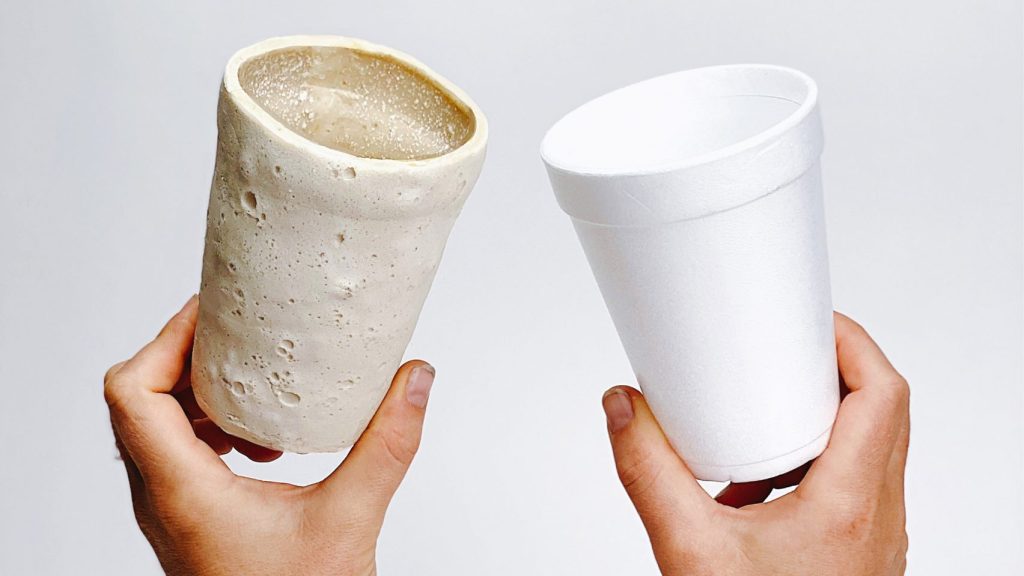Doppelgänger’s innovative new product gives mealworms something to chew on besides plastic. By doing so, Doppelgänger is not only helping the environment, but also revolutionizing the way we think about waste management.
Charlotte Böhning and Mary Lempres of Doppelgänger have developed a type of bioplastic called Chitofoam. It is made from the exoskeleton of mealworms and breaks down in soil in a couple of weeks. Chitofoam is shock-absorbent, water-resistant, and can be formed into cups, foam peanuts, and other types of packaging – just like expanded polystyrene (EPS). Doppelgänger created this bioplastic as an environmentally friendly alternative to traditional EPS.
EPS, or more commonly known as Styrofoam, is difficult to recycle and uneconomical, meaning it takes up a lot of space in our landfills.
Chitofoam is a much better option than polystyrene. Polystyrene is not biodegradable and will sit in landfills for centuries, while chitofoam is made from chitin, a biopolymer which mealworms use to build their strong yet pliable exoskeleton. Chitofoam is also nontoxic and does not release harmful chemicals into the environment like polystyrene does.
Doppelgänger’s bioplastic foam is made from mealworms – the larval form of the mealworm beetle. Böhning and Lempres’ version of the foam was made from mealworms that were living in their homemade biodigester. The biodigester was developed by industrial design students to dispose of polystyrene modelling foam and packaging. The Stanford University researchers documented that mealworms have the natural ability to digest and break down polystyrene using their gut bacteria.
It all began with just one tank containing 1,000 mealworms that we used to store our waste foam (unfortunately, there’s a lot of it at design school). Gradually, we added tiered drawers and more worms. Not only can these mealworms help reduce the amount of polystyrene waste that ends up in landfills and natural environments, but they can do so without harming their health.
Wasteful no more, mealworms can help green your design studio. At the end of their life, these critters are collected and used to create chitosan, a powder derived from their exoskeletons. Chitosan is dissolved in citric acid and mixed with a waste-derived biopolymer to create a material the studio is keeping under wraps until its patent application has been granted.
Doppelgänger says that the key to creating its signature foamy consistency is vigorous shaking, which makes it more flexible and elastic than traditional expanded polystyrene. Additionally, this process gives the mixture natural antifungal and antimicrobial properties.

Leave a comment